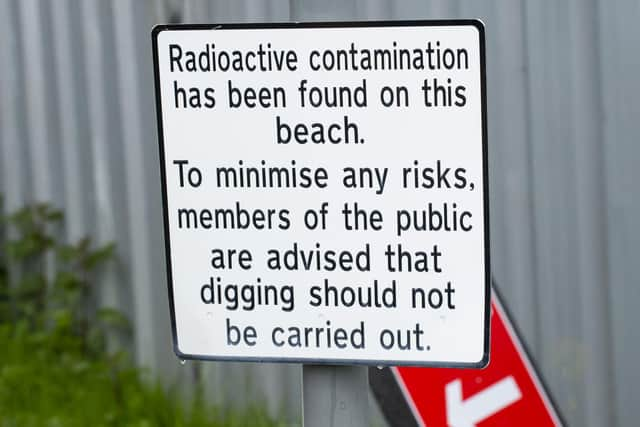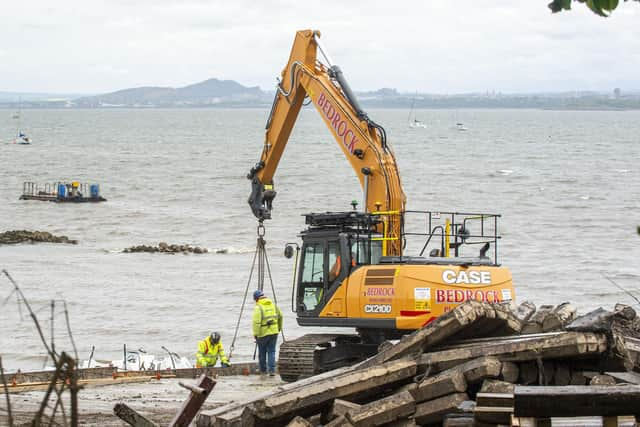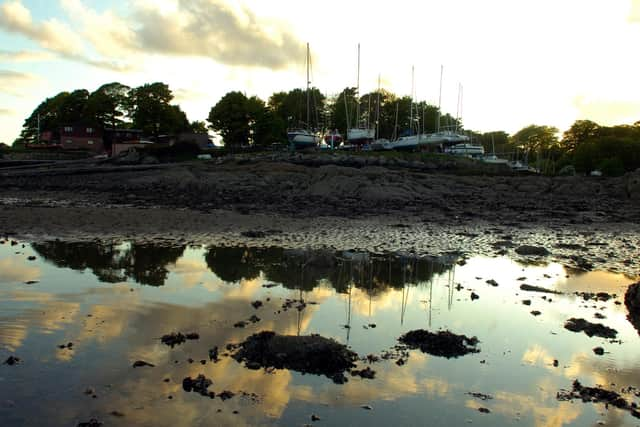30 years on, Scotland's radioactive beach clean-up begins at last
It’s not a scene which might usually be welcome, but locals in the Fife town of Dalgety Bay have been waiting decades for this – ever since highly dangerous radioactive material was detected on the shoreline more than 30 years ago.
Contamination was first identified there in 1990, but the source – luminous paint used on aircraft navigation dials – dates back to the Second World War.
Advertisement
Hide AdAdvertisement
Hide AdThe area was once home to Donibristle military airfield, where a large number of planes were dismantled after the end of the conflict in 1945 and the debris burned and buried.


Radium was used to coat instrument panels so they could be seen in the dark, but it is radioactive and toxic to human health, with a half life of 1,600 years.
It’s the same element which was discovered by – and eventually killed – radiation treatment pioneer Marie Curie.
Investigations by Scotland’s environment watchdog have identified several caches of the radioactive particles, with the largest contained within the headland.
Over the years, despite various removal operations, the foreshore has been continuously re-polluted by about 100 particles each year – possibly swept ashore by sea currents.


Some particles found have been so highly radioactive they could be deadly if they got inside the body and “hot” enough to cause radiation burns on bare skin.
Part of the shore has been cordoned off since 2011, with signs warning of the dangers.
Now the long-awaited clean-up by the Ministry of Defence has finally got under way, with work expected to be completed some time next year.
Advertisement
Hide AdAdvertisement
Hide AdThe Scottish Environment Protection Agency (Sepa)has promised the operations will bring “a permanent and positive resolution for the community”.


All current restrictions are expected to be lifted once the job is completed and verified by Sepa, allowing people to enjoy unrestricted access to the area for the first time since 2011.
David Barratt, Fife councillor for Inverkeithing and Dalgety Bay, has welcomed the work finally getting started.
He said: “It has taken over 30 years and significant pressure from the community to get to this point.
“I’m delighted that works are now under way and grateful to Sepa for all their effort in ensuring it will be done right, providing a permanent solution.
"It should send a clear message that it doesn’t matter how much time passes, the polluter should always pay.
“Time will tell if its smooth sailing from here and whether a 2022 completion date is possible.
"They have around 20,000 tonnes of material from the area to screen and the more contamination they find, the longer it will take, but at least now we know it will be safe, however long it takes.”
Advertisement
Hide AdAdvertisement
Hide AdDr Paul Dale, radioactive substances manager at Sepa, said: “Communities around Dalgety Bay have for many years lived with the environmental legacy of Second World War radium contamination on the shore.
“Sepa has been clear in our requirements that remediation will be done once, and it will be done right – providing a permanent and positive resolution.”
He added:
“This is indeed an important milestone for Dalgety Bay and for Scotland’s stunning environment.”
A message from the Editor:
Thank you for reading this article. We’re more reliant on your support than ever as the shift in consumer habits brought about by coronavirus impacts our advertisers.
If you haven’t already, please consider supporting our trusted, fact-checked journalism by taking out a digital subscription.
Comments
Want to join the conversation? Please or to comment on this article.
